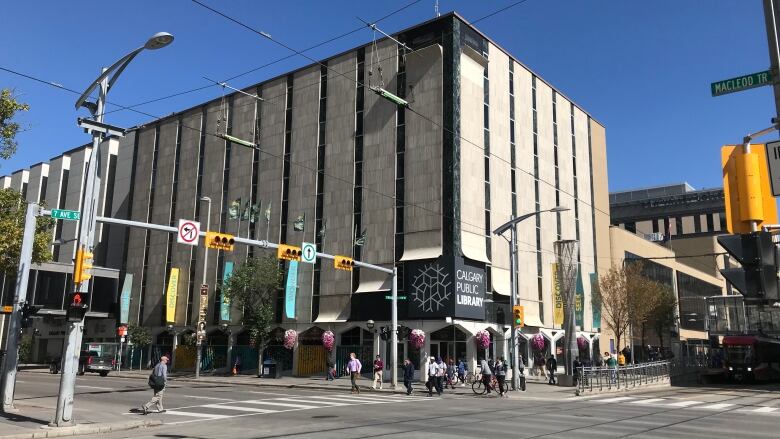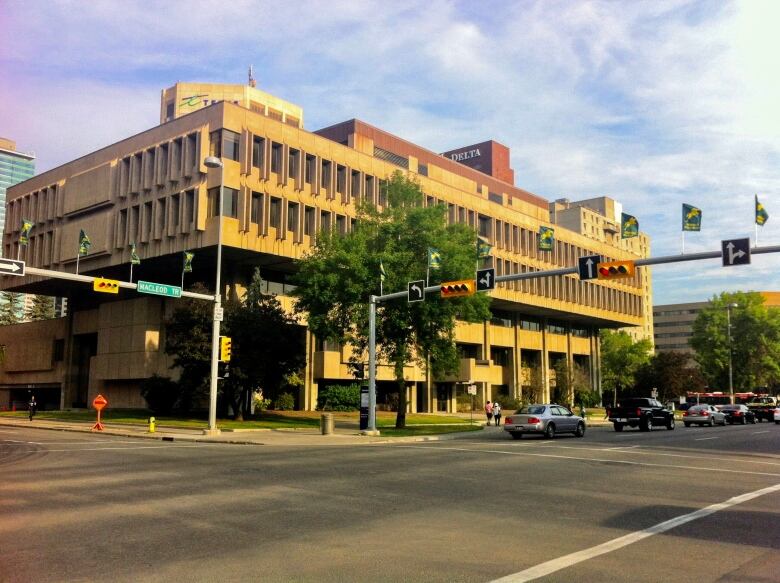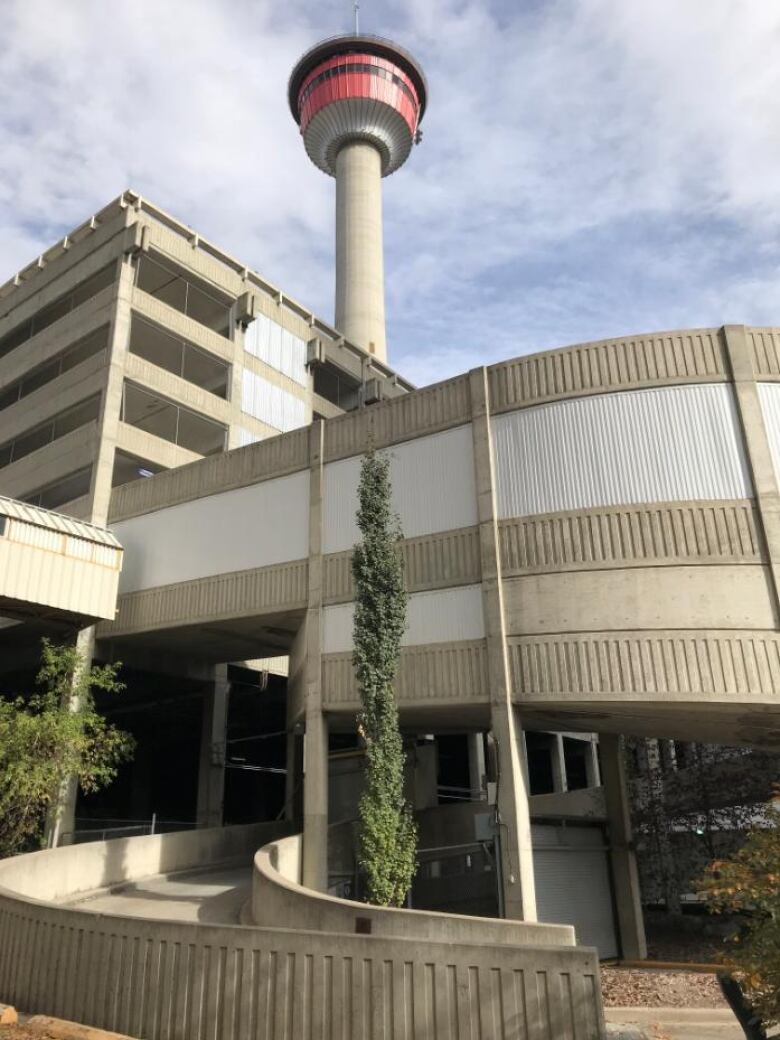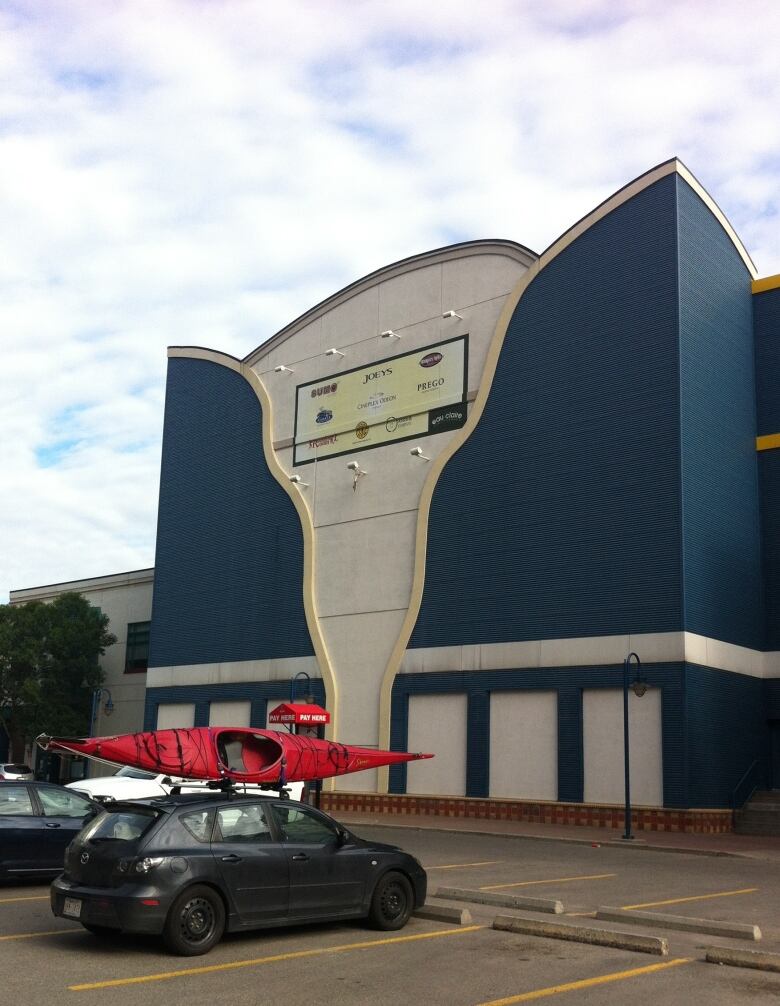Revitalizing downtown Calgary: a 60-year history of over-promising and under-delivering
What the city core needs is less planning and more action

This column is an opinion from Richard White, who has written extensively on Calgary's urban development. For more information aboutCBC's Opinion section, please see theFAQ.

The city of Calgary's planning department has authored yet another 100-plus page planning document, called "Calgary's Greater Downtown Plan."
While still a draft, it replaces the 2007 "Centre City Plan," a 182-page document with hundreds of ideas on how to make downtown a better place to live, work and play.
The new plan includes the same seven communities: Downtown Commercial Core, Chinatown, Downtown West, Eau Claire, East Village, Beltline and Stampede Park. And it continues to focus on how to make those areas more attractive to live, work and play. The big difference between this plan and the one from 2007 is the need to find new uses for empty office towers, rather than find ways to accommodate new ones.
In case you were wondering, there is also a Beltline Plan, a C+E Master Plan (aka Stampede Park Culture and Entertainment District), an East Village Master Plan, plus the city is working on plans for Chinatown, Eau Claire, Downtown West and Stephen Avenue.
Plenty of planning
Yes, the city loves to plan. What we need is less planning and more action!
Fortunately, I am told an action plan is coming by the end of April and it will identify immediate projects along with requests from the city for a commitment to fund them.
What the city really needs is a concise three-year action plan focusing specifically on the transformation of the Downtown Commercial Core (DCC) from an office ghetto (over 40 blocks of mostly office towers, with vacancy levels over 25 per cent) to a hip place where young professionals want to live, play and yes, fill up the empty office spaces. Forget the DCC sister communities, the DCC is on life support.

The initiatives need to be based on reality. COVID-19 will continue to hinder any attempts to make downtown a more animated and exciting place for the rest of 2021 and perhaps beyond.
The initiatives must also be based on demand. Is there demand for more residential development in the downtown? Is there demand for more cafes, restaurants, patios, live music venues and nightclubs in the core? It is a bit of a chicken-and-egg situation: what comes first, the people or the amenities?
Also, any new plans must harmonize with the plans that are already in place, for example, the improvements to Glenbow, Arts Commons and Stephen Avenue. The cost for these transformations could be $750 million not an insignificant sum. Maybe we should just focus on these initiatives for the next five years and make sure they succeed.
Past revitalization failures
Unfortunately, the city of Calgary has a 60-year history of over-promising and under-delivering, when it comes to downtown revitalization.
Back in the 1960s, the big transformational idea was to create a Civic District with the addition of the W.R. CastellLibrary (1963), the Calgary Board of Education headquarters (1969), the downtown YWCA (1971) and Bow Valley College (1972). The Harry Hays Building (1978) and Rocky Mountain Court apartments (1980) were added later.
A second revitalization plan was hatched in the late 60s, which included the Calgary Tower (1968), the Palliser Square office and retail complex (1970), the Convention Centre/Four Seasons Hotel (1974) and the Glenbow (1975).

Stephen Avenue was converted into a pedestrian mall in 1968 to make the area more pedestrian friendly.
Later, in the 1970s, the "big idea" for downtown revitalization was TD Square (1977) with its two office towers, shopping mall and Devonian Gardens. It was supposed to allow downtown to compete with suburban malls.
Also, Seventh Avenue became a "transit only" street in preparation for the LRT, which opened in 1981. The idea was to make downtown more accessible for suburbanites to come downtown, not only to work, but for shopping, dining and entertainment. The "Greater Downtown Plan" includes the same thinking.
In the 1980s, the city tried again, constructing Olympic Plaza, the new municipal building and the Performing Arts Centre, with the promise of bringing life to the east end of downtown by making it a festival, cultural and entertainment district.
In the 1990s, the city tried to foster the development of an urban village in Eau Claire with Eau Claire Market, Eau Claire Y, Prince's Island enhancements, a major hotel, new residential development and new offices. While the private sector built several office towers and thousands of new homes along the river, it did nothing for the DCC as new residents preferred wandering along the river, rather than up Barclay Mall to Stephen Avenue. (They also, presumably, preferred shopping outside the core.)
Then, in the early 2000s, the city's big idea for downtown revitalization was the East Village, which remains a very promisingwork in progress.
Downtown is a 'complete community'
It is not easy to convert a "vertical office park" into a people place. Living and playing in the shadow of office towers is a tough sell when the neighbouring communities are more pedestrian-friendly and amenity rich.
It might surprise some that 8,683 people live in the DCC, according to the 2019 census, making it second only to the 25,129 people living in the Beltline (a larger geographic area) of the "Greater Downtown" communities.

The current buzz phrase in planning jargon is "complete communities." In other words, good community design allows residents to meet all of their basic needs within their community. It might surprise some that the DCC is a complete community.
It has excellent access to medical, health, transit, cultural and recreational amenities. There is a diversity of restaurants, pubs, clubs and shops nearby. And it has green spaces, parks, pathways and a pedestrian street within walking distance.
It has daycares, but no schools. However, having schools nearby may not be as important in the DCC, as most Calgary parents with school-aged children probably don't want to live in high rise towers.
Some would argue the area needs a grocery store. In fact, it has Kay's Food Market and, depending where you live, it is a short walk to a Superstore, two Safeway stores, a Calgary Co-op, a Sunterra and an Urban Fare.
Last word
Ideas are a dime a dozen, the difficulty is identifying the best ones, implementing them, and then learning from them. The city's focus must be on how we can make our downtown core more exciting. We need innovative, experimental maybe even crazy ideas, like converting office lobbies into people places that are open evenings and weekends.
When it's completed, the Calgary Greater Downtown Plan must be a call to action, as the downtown core will have to compete with Stampede Park as Calgary's premier cultural, tourist and entertainment attraction by the late 2020s. And the Stampede area has a head start, with its approved masterplan, community revitalization levy funding and Calgary Municipal Land Corporation experience and expertise.
Do you have a strong opinion that could add insight, illuminate an issue in the news, or change how people think about an issue? We want to hear from you. Here'show to pitch to us.












_(720p).jpg)


 OFFICIAL HD MUSIC VIDEO.jpg)
.jpg)



























































































